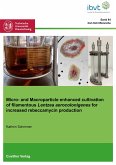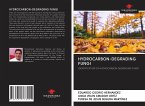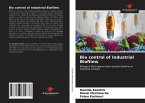The Amazon rainforest represents one of the largest reserves of natural resources, containing a great variety of microorganisms still unknown, such as bacteria, yeasts and fungi. Filamentous fungi produce a large number of lipases that can be used in numerous biotechnological applications such as in the pharmaceutical, food, fine chemicals, cosmetics and oleochemical industries. In this context, the objective of this work was to characterize morphologically and molecularly and to determine the lipolytic activity of a filamentous fungus. For this, three samples were evaluated, and the fungus initially identified as CFAM1 was selected. This fungus was cultivated in submerged fermentation (FSm) in Czapeck® medium without dextrose, containing commercial soy, olive, corn or sunflower oils as inducers of extracellular lipase production.
Hinweis: Dieser Artikel kann nur an eine deutsche Lieferadresse ausgeliefert werden.
Hinweis: Dieser Artikel kann nur an eine deutsche Lieferadresse ausgeliefert werden.








